The Placement Process
To find out if our long-term care home is right for you, please consider the following 3 steps for admission:
Your local Home and Community Care Support Services (HCCSS) can help you with defining your needs and personal situation, determining your eligibility, locating providers, and applying for care.
Residential Care Settings
If you are eligible for admission to a long-term care home, then the HCCSS co-ordinates your application for you and you select your top three choices of homes. The following chart can help clarify roles and responsibilities:
Once the application has been completed and your top three homes have been selected, the application is sent to the chosen homes who then review the information and determine their ability to meet the needs of the applicant.
If the long-term care home feels they are able to meet the applicant’s needs, a letter confirming acceptance will be sent out to the applicant or their substitute decision-maker and the HCCSS and the applicant's name will be added to the waiting list.
Waiting lists for long-term care are managed by the HCCSS. When the long-term care home has a vacancy, they notify the HCCSS who then makes a bed offer.
Remember, regardless of your situation or the options you are considering, your local Home and Community Care Support Services is here to help with resource information.
Information taken from the MOHLTC website at www.health.gov.on.ca.
- Determine your eligibility (i.e. whether you qualify for a particular service or subsidy)
- Select the organization(s) that will provide the service (i.e. the “provider organization”)
- Apply for care (fill out the appropriate paperwork)
Your local Home and Community Care Support Services (HCCSS) can help you with defining your needs and personal situation, determining your eligibility, locating providers, and applying for care.
Residential Care Settings
If you are eligible for admission to a long-term care home, then the HCCSS co-ordinates your application for you and you select your top three choices of homes. The following chart can help clarify roles and responsibilities:
| Type of service | Who selects the provider | Who coordinates the application | Who determines eligibility |
| Supportive Housing | You | You | The Provider |
| Retirement Homes | You | You | The Provider |
| Long-Term Care Homes | You select a maximum of 3 providers (except for short-stay respite or if immediate admission is required). | The HCCSS co-ordinates your application. A doctor or nurse provides medical information for the application. | The HCCSS |
| Type of service | Who selects the provider |
| Supportive Housing | You |
| Retirement Homes | You |
| Long-Term Care Homes | You select a maximum of 3 providers (except for short-stay respite or if immediate admission is required). |
| Type of service | Who coordinates the application |
| Supportive Housing | You |
| Retirement Homes | You |
| Long-Term Care Homes | The HCCSS co-ordinates your application. A doctor or nurse provides medical information for the application. |
| Type of service | Who determines eligibility |
| Supportive Housing | The Provider |
| Retirement Homes | The Provider |
| Long-Term Care Homes | The HCCSS |
If the long-term care home feels they are able to meet the applicant’s needs, a letter confirming acceptance will be sent out to the applicant or their substitute decision-maker and the HCCSS and the applicant's name will be added to the waiting list.
Waiting lists for long-term care are managed by the HCCSS. When the long-term care home has a vacancy, they notify the HCCSS who then makes a bed offer.
Remember, regardless of your situation or the options you are considering, your local Home and Community Care Support Services is here to help with resource information.
Information taken from the MOHLTC website at www.health.gov.on.ca.
Financial Assistance
Current accommodation per diem rates are set by the Ontario Ministry of Long Term Care, and are available at the Ministry of Long Term Care website.
Rate Reductions
Residents who are in basic accommodations may be eligible for a reduction in their monthly charges. The resident or Power Of Attorney needs to supply a Notice of Assessment (received from the government upon receipt of your refund or tax bill) from the previous tax year and the completed Application for Reduction Form with signature. A simple calculation is then done on site to determine if the resident is entitled to a reduction. Once the rate has been established a copy of the rate reduction form will be sent to families.
Involuntary Separation
Residents who have a spouse living in the community may apply for an Involuntary Separation reduction. The Ministry does require financial documentation for this reduction. Residents or Power of Attorneys need to contact Income Security at 1-800-277-9914 for further information regarding this reduction.
Rate Reductions
Residents who are in basic accommodations may be eligible for a reduction in their monthly charges. The resident or Power Of Attorney needs to supply a Notice of Assessment (received from the government upon receipt of your refund or tax bill) from the previous tax year and the completed Application for Reduction Form with signature. A simple calculation is then done on site to determine if the resident is entitled to a reduction. Once the rate has been established a copy of the rate reduction form will be sent to families.
Involuntary Separation
Residents who have a spouse living in the community may apply for an Involuntary Separation reduction. The Ministry does require financial documentation for this reduction. Residents or Power of Attorneys need to contact Income Security at 1-800-277-9914 for further information regarding this reduction.
